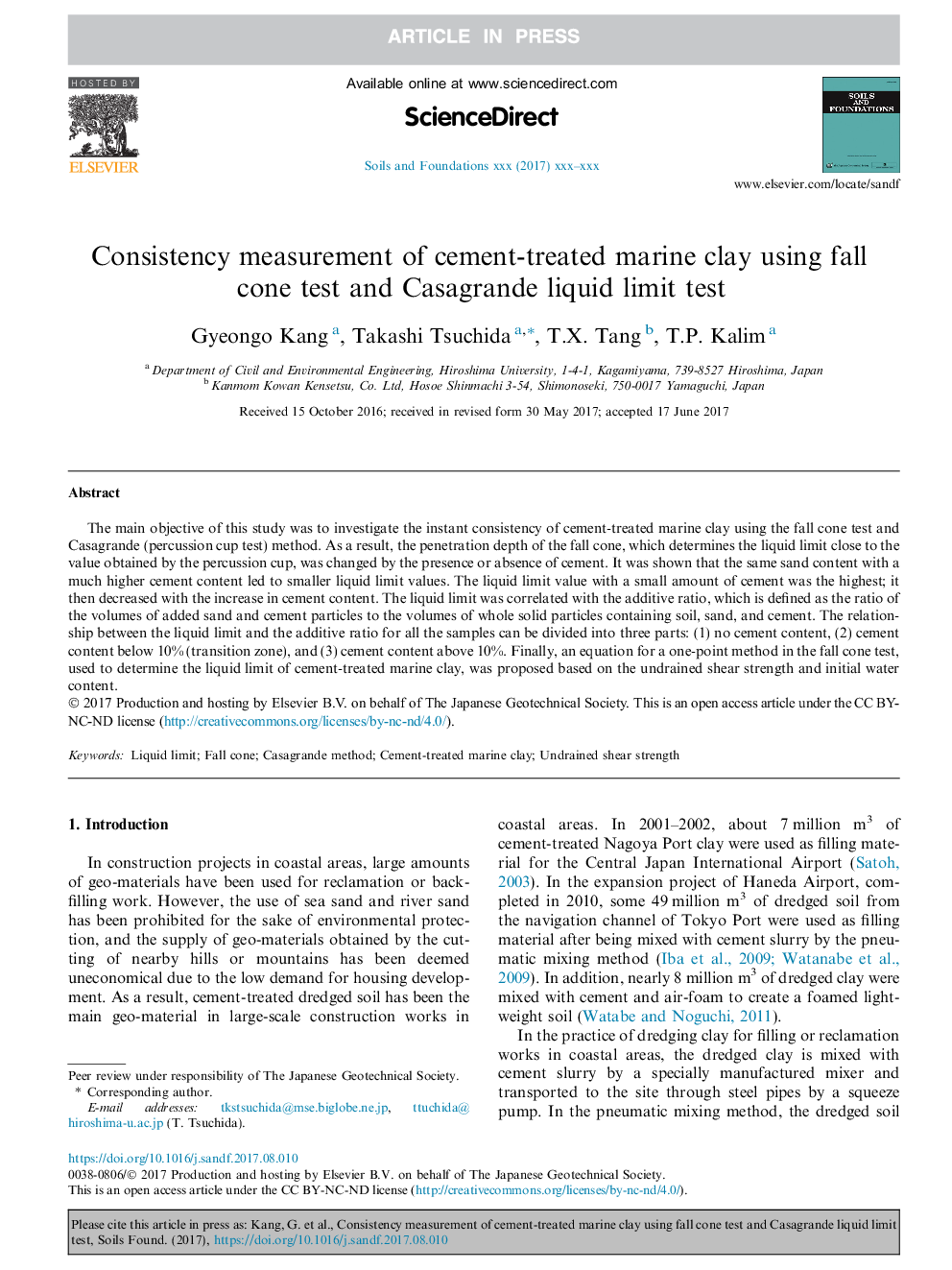| Article ID | Journal | Published Year | Pages | File Type |
|---|---|---|---|---|
| 6773919 | Soils and Foundations | 2017 | 13 Pages |
Abstract
The main objective of this study was to investigate the instant consistency of cement-treated marine clay using the fall cone test and Casagrande (percussion cup test) method. As a result, the penetration depth of the fall cone, which determines the liquid limit close to the value obtained by the percussion cup, was changed by the presence or absence of cement. It was shown that the same sand content with a much higher cement content led to smaller liquid limit values. The liquid limit value with a small amount of cement was the highest; it then decreased with the increase in cement content. The liquid limit was correlated with the additive ratio, which is defined as the ratio of the volumes of added sand and cement particles to the volumes of whole solid particles containing soil, sand, and cement. The relationship between the liquid limit and the additive ratio for all the samples can be divided into three parts: (1) no cement content, (2) cement content below 10% (transition zone), and (3) cement content above 10%. Finally, an equation for a one-point method in the fall cone test, used to determine the liquid limit of cement-treated marine clay, was proposed based on the undrained shear strength and initial water content.
Keywords
Related Topics
Physical Sciences and Engineering
Earth and Planetary Sciences
Geotechnical Engineering and Engineering Geology
Authors
Gyeongo Kang, Takashi Tsuchida, T.X. Tang, T.P. Kalim,
